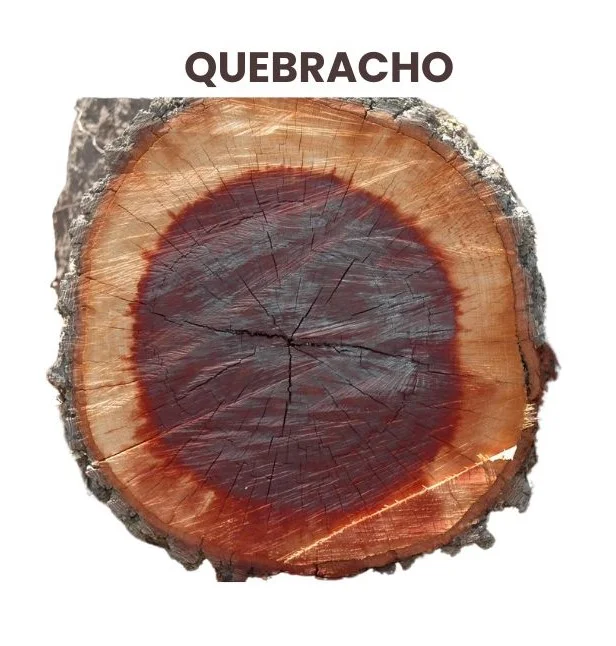Quebracho, derived from the Aspidosperma tree, is a homeopathic remedy known as “the digitalis of the lungs.”
It is utilized for conditions affecting respiratory function, particularly in cases of asthma and pulmonary stenosis.
Quebracho stimulates respiratory centers, facilitating increased oxygenation and carbon dioxide excretion, making it effective in addressing dyspnea and asthma.

Table of Contents
ToggleSOURCE INFORMATION
Scientific Classification
- Kingdom: Plantae
- Order: Gentianales
- Family: Apocynaceae
- Genus: Aspidosperma
Origin
- Quebracho originates from South America, particularly from the Aspidosperma tree species native to regions like Argentina, Brazil, and Paraguay.
- Indigenous peoples have used Quebracho for various medicinal purposes, including its respiratory benefits.
Historical Facts
- Quebracho has a long history of traditional use among indigenous communities in South America for its medicinal properties.
- Its efficacy in respiratory conditions has been recognized for centuries, leading to its incorporation into homeopathic practice.
DRUG PATHOGENESIS
- Quebracho acts as a respiratory stimulant, addressing temporary obstructions to blood oxygenation by enhancing respiratory center activity.
- It aids in increasing blood oxygen levels and promoting the elimination of carbon dioxide.
- The remedy is particularly indicated for pulmonary stenosis, thrombosis of the pulmonary artery, uraemic dyspnea, and cardiac asthma.
KEY CHARACTERISTICS
- Acts as a respiratory stimulant, improving oxygenation and carbon dioxide elimination.
- Effective in cases of asthma, pulmonary stenosis, thrombosis of pulmonary artery, and uraemic dyspnea.
- Addresses dyspnea, especially during exertion.
- Known as “the digitalis of the lungs.”
MODALITIES
- Symptoms worsen during exertion.
- Respiratory stimulation leads to improved oxygenation and carbon dioxide excretion.
RELATIONSHIP WITH OTHER DRUGS
- Compare with Coca, Arsenicum, and Coffea for difficult respiration.
- Similar to Catalpa for respiratory conditions.
DOSE
- First trituration of tincture or Aspidospermin hydrochloride 1 grain of 1x trituration every hour for a few doses.
Frequently Asked Questions
Q: What is Quebracho and how is it used in homeopathy?
A: Quebracho, derived from the Aspidosperma tree, is a homeopathic remedy primarily used for respiratory conditions, particularly asthma and pulmonary stenosis.
It acts as a respiratory stimulant, improving oxygenation and carbon dioxide elimination.
Q: What are the key characteristics of Quebracho?
A: Quebracho acts as a respiratory stimulant, addressing conditions like asthma, pulmonary stenosis, thrombosis of the pulmonary artery, uraemic dyspnea, and cardiac asthma.
It is known as “the digitalis of the lungs” due to its effects on respiratory function.
Q: Can Quebracho worsen symptoms in certain situations?
A: Symptoms may worsen during exertion, as Quebracho primarily addresses dyspnea, especially during physical effort.
However, its respiratory stimulation ultimately leads to improved oxygenation and carbon dioxide elimination.
Q: How does Quebracho compare to other remedies for respiratory conditions?
A: Quebracho can be compared to remedies like Coca, Arsenicum, and Coffea for difficult respiration.
It shares similarities with Catalpa in addressing respiratory conditions, but its primary focus is on stimulating respiratory centers.
Q: What is the recommended dosage of Quebracho in homeopathic practice?
A: The recommended dosage of Quebracho is the first trituration of tincture or Aspidospermin hydrochloride 1 grain of 1x trituration, taken every hour for a few doses.
Q: What are some of the difficult words associated with Quebracho and their meanings?
A: Difficult words associated with Quebracho include pulmonary stenosis (narrowing of the pulmonary valve opening), thrombosis (formation of blood clots), uraemic dyspnea (shortness of breath due to kidney dysfunction), cardiac asthma (asthma-like symptoms related to heart conditions), trituration (grinding a substance into fine particles), and exertion (physical or mental effort).
Meaning of Difficult Words
- Pulmonary stenosis: Narrowing of the pulmonary valve opening in the heart, restricting blood flow to the lungs.
- Thrombosis: Formation of a blood clot within a blood vessel, obstructing blood flow.
- Uraemic dyspnea: Shortness of breath caused by uremia, a condition where waste products accumulate in the blood due to kidney dysfunction.
- Cardiac asthma: Asthma-like symptoms triggered by heart failure or cardiac conditions.
- Trituration: The process of grinding a substance into fine particles or powder.
- Exertion: Physical or mental effort, often associated with increased activity or work.













Leave a Reply